► World first: electric conversion of a Morgan 4/4
► 1957 four-wheeler gets 108bhp e-motor and 150 mile range
► Electrogenic's classic conversions now include Triumph Stag
While some enthusiasts are pontificating about buying 'low-cost' ICE cars to squirrel away before the ban on new combustion-engine sales in 2030, the market for full EV conversions of cherished and historic cars is maturing nicely.
The Morgan EV3: Malvern's electric three-wheeler
The latest adaptations to silently hit the streets come from Electrogenic, taking on two quintessentially British classic cars that you're guaranteed to be familiar with from every village vintage show and retro rally.
Morgan 4/4 - four-wheeler, minus four cylinders
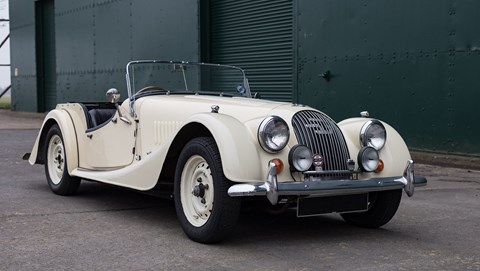
Electrogenic's Morgan 4/4 is a pioneering conversion of the original four-wheeler. Based on a 1957 original, the 1930s-inspired ash-framed body now houses decidedly 21st-century technology without altering the work of Malvern's craftspeople and stylists.
Part of a growing category of 'REVs' - retro electric vehicles - the converted Morgan's 36bhp four-cylinder engine (a Ford 100E sidevalve) and ancilliaries are replaced with a 'Hyper9' motor producing 108bhp (80kW) and, in an impressive display of packaging creativity, seven batteries totalling 35kWh are distributed through the Morgan's compact body - including two packs immediately visible under the louvred bonnet.
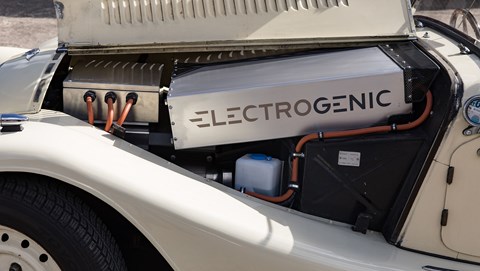
It is this innovative approach to packaging that has allowed Electrogenic to bring the four-wheeler Moggy to electrified life without altering the appearance - the diminuitive Morgan's minimal wasted space, with no boot to speak of, means this is a bigger challenge than more modern designs and, indeed, large limousines such as electrified Range Rovers and Rolls Royces.
Crucially, the Morgan coversion retains the original three-speed gearbox, allowing an immersive, authentic driving experience with a predictable amount of fun; this 1950s car can take off rather smartly in first, or be left in third gear and driven as any modern electric car, cruising on a significantly increased 174 ln ft of torque.
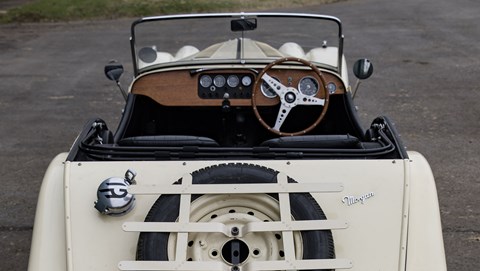
Electrogenic's sympathetic approach extends to original dials revised to provide charge and battery information, and a period-appropriate fuel filler concealing a Type 2 charging socket.
Weight distribution front-rear is preserved, as is the Morgan's period driving experience, but the unusual approach of placing the batteries higher in the body suggests that the Electrogenic 4/4 may need a different driving style.
Triumph Stag: no stranger to engine swaps
Enthusiasts and pub car-bores alike know the Triumph Stag's riches-to-rags story; a handsome Italian-styled four-seater grand-tourer with a cutting-edge 3.0-litre V8 engine, it should have been a world-beater; instead, it could barely tackle Britain's new motorways before the complex and under-developed OHC motor became a complex and under-developed paperweight.
Devoted fans - and time - have solved the quirks of the original engine, but in the '80s it wasn't uncommon for the Triumph unit to be ripped out and replaced with the crude but reliable Rover V8 many believed the car should have had from the start. Or worse, as the cars depreciated - Ford V6s weren't uncommon.
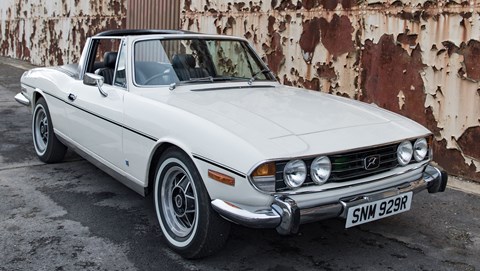
All of which makes Electrogenic's REV conversion of a 1976 Stag less of a heresy than some classic aficionados might feel electrification represents, and rather, just another chapter in owners' efforts to get the perfect Triumph.
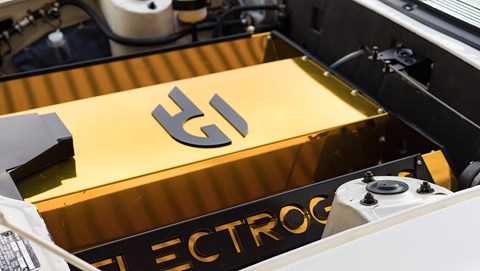
Like the Morgan above, the original motor has been replaced with an 80kW Hyper9 unit, once again adapted to the original gearbox (in this case, a four speed - Electrogenic don't mention if the overdrive still works) and paired with 37kWh of batteries distributed through the engine bay and boot, replacing the fuel tank. In this case, the e-motor matches the Stag V8 for torque, albeit while producing 30bhp less power; it's unlikely the Triumph's performance has suffered for the conversion however.
Classic conversions: originality compromised, or a sustainable future?
In both cases, the goal of the owners is zero-local-emission classic motoring - which, of course, is Electrogenic's mission statement.
'We love the challenge of converting beautiful classic cars with technology that means they will be able to continue to be used guilt-free, even in our cities, for years to come. Working on first-time conversions such as the Stag and the Morgan 4/4 helps us to continue honing both our technology offering and our knowledge of the integration process in different body types, and means we maintain our position as a leader in classic car electrification' - Ian Newstead, director and Co-Founder of Electrogenic.
As that statement implies - this is still a developing industry, reliant on affluent customers and high-quality donor cars, and Electrogenic don't have a guideline pricelist as each conversion is bespoke to the car. You can safely assume it runs into five figures, though.
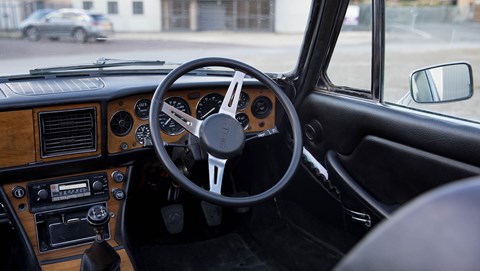
Original engine mounting, interior trim and bodywork is preserved as much as possible not just for appearance - the conversions are designed to be upgradable and reversible in many cases, but as infrastructure, taxation and the view of society of combustion engines move closer to decarbonisation, this could be the way forward for a wider group of owners.
It's also worth remembering that electric motors are considerably more reliable and predictable than decades-old wiring, cooling and carbon-choked engine blocks, already at risk from environmental concerns even in modern classics as ethanol content in fuel increases, threatening old fuel lines, tank materials, seals and pumps.
Steve Drummond, director and co-founder of Electrogenic 'Converting older cars like these to electric power is about using modern technology to bring out the best characteristics in the cars. Our systems allow us to maintain the originality of the rest of the car, which is a really important factor for us. For example, it means that we can repurpose the original instruments to keep the interior as untouched as possible. Ultimately, what we're always trying to do with our conversions is to make the cars we've been entrusted with into 'better versions of themselves'.
Living with a converted classic is unlikely to be much harder than a modern EV. Not only do the reduced maintenance aspects of regenerative braking and no combustion byproducts fouling up the oil apply, the 37kWh capacity chosen by Electrogenic is small enough for a 24hr full charge on domestic power and comfortable two-hour top ups from wall boxes; expect country pubs with pleasant beer gardens to sprout charging points the minute there's an affordable MG B conversion...